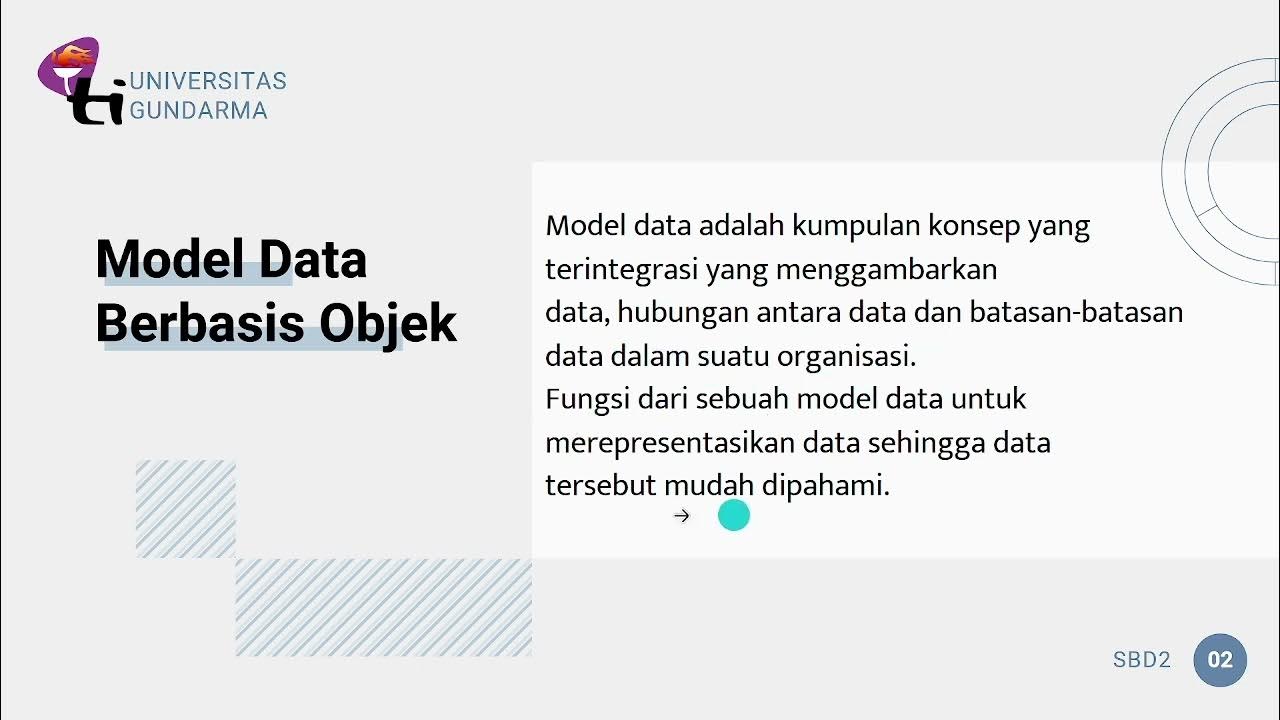Oracle The Premier Multi Model Database Engine
Summary
TLDRThis course introduces Oracle's Premier multimodel database engine, highlighting its support for various data models including relational, document, spatial, and graph databases. The engine enables seamless integration of diverse data types such as JSON and XML without modification. It also features a triple store for enhancing graph data. Emphasizing its relational capabilities, the course underscores how Oracle facilitates efficient data management and quick access to critical information, making it a versatile choice for developers handling complex data requirements.
Takeaways
- 😀 Oracle is a leading multimodel database engine that supports various database models, including relational, in-memory, and sharded databases.
- 📂 It natively supports document models for JSON, XML, and text-based data without requiring any modifications.
- 🗺️ Oracle includes a spatial database engine designed specifically for handling GPS and mapping data.
- 📈 The multimodel database allows for different types of data activities within a single database engine.
- 🔍 Graphing data support helps in detecting fraud by tracking organic associations between transactions.
- 📊 The multimodel database enables the use of relational, document, spatial, and graphing databases simultaneously.
- 🛠️ Oracle supports a variety of languages and access protocols to enhance usability and integration.
- 🔗 A triple store feature allows developers to add meaning to graph data, improving data interpretation.
- 💻 The focus of the discussion in this course will be primarily on the relational aspect of SQL.
- 💡 Overall, Oracle's multimodel capabilities facilitate versatile data management across different use cases.
Q & A
What is Oracle's multimodel database engine?
-Oracle's multimodel database engine is a flexible platform that supports various database models including relational, in-memory, sharded, document, spatial, and graphing databases, allowing for diverse data activities within a single system.
What types of data models does Oracle support?
-Oracle supports several data models: relational, document (including JSON and XML), spatial, graphing, and triple store.
What is the significance of sharded databases in Oracle?
-Sharded databases in Oracle are designed to distribute data across multiple servers, enhancing performance and scalability by allowing for parallel processing.
How does Oracle handle document-based data?
-Oracle natively supports document-based data such as JSON and XML, allowing users to store and retrieve this type of data without needing to make any modifications.
What is the purpose of Oracle's spatial database engine?
-Oracle's spatial database engine is specifically designed to manage GPS and mapping data, facilitating location-based services and analysis.
What role does graphing data play in Oracle's database system?
-Graphing data in Oracle is used for understanding relationships and associations, making it particularly useful for applications like fraud detection by tracking transactional behavior.
What is a triple store, and how is it used in Oracle?
-A triple store in Oracle allows developers to add semantic meaning to graph data, enabling complex querying and data relationships based on RDF (Resource Description Framework) principles.
What are the benefits of supporting multiple languages in Oracle's database engine?
-Supporting multiple languages allows developers to interact with the database using their preferred programming languages, enhancing flexibility and facilitating integration with various applications.
Why is the relational aspect of SQL significant in Oracle's database engine?
-The relational aspect of SQL is significant because it provides a structured way to manage and query data, ensuring data integrity and facilitating complex data manipulations within Oracle's database system.
Can you explain how Oracle's multimodel database engine enhances data management?
-Oracle's multimodel database engine enhances data management by allowing different types of data to coexist and be managed within a single environment, simplifying development and reducing the need for data conversion or migration.
Outlines

このセクションは有料ユーザー限定です。 アクセスするには、アップグレードをお願いします。
今すぐアップグレードMindmap

このセクションは有料ユーザー限定です。 アクセスするには、アップグレードをお願いします。
今すぐアップグレードKeywords

このセクションは有料ユーザー限定です。 アクセスするには、アップグレードをお願いします。
今すぐアップグレードHighlights

このセクションは有料ユーザー限定です。 アクセスするには、アップグレードをお願いします。
今すぐアップグレードTranscripts

このセクションは有料ユーザー限定です。 アクセスするには、アップグレードをお願いします。
今すぐアップグレード関連動画をさらに表示

Learn What is Database | Types of Database | DBMS

Which Database Model to Choose?

Types of Databases: Relational vs. Columnar vs. Document vs. Graph vs. Vector vs. Key-value & more

Types of Databases | Criteria to choose the best database in the System Design Interview

SBD1 Pertemuan1 | 3IA03 & 3IA04

Database Roadmap 2024 | الدليل الشامل لقواعد البيانات
5.0 / 5 (0 votes)
